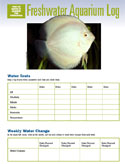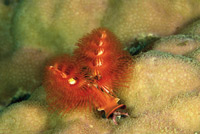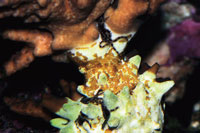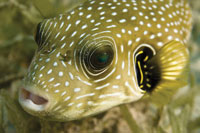Choose vegetable oils and margarines with liquid vegetable oil as the first listed ingredient and no more than 2 grams of saturated fat per tablespoon. Examples include:
Canola
Corn
Olive
Safflower
Sesame
Soybean
Sunflower oil
Choose liquid or tube margarines low in saturated fat and trans fat. Choose reduced-fat and no-fat salad dressings and mayonnaise with no more than 1 gram of saturated fat per tablespoon.
Preparation tips include:
Use fats and oils lowest in saturated fat and cholesterol for cooking, baking and in spreads sparingly.
Use reduced-fat or no-fat salad dressings with salads and dips.
Coconut oil, palm oil and palm kernel oil have no cholesterol; however, they are high in saturated fat.
Fish and Omega-3 Fatty Acids
The American Heart Association recommends eating fish, particularly fatty fish, at least two times per week. Good choices include:
Mackerel
Lake trout
Herring
Sardines
Albacore tuna
Salmon
Other good sources of omega-3 Fatty acids include:
Soybeans
Canola
Walnut and flaxseed and their oils
The American Heart Association does not recommend widespread use of folic acid and B vitamin supplements to reduce the risk of heart disease and stroke. Instead, they advise a healthy, balanced diet rich in fruits and vegetables, whole grains, and fat-free or low-fat dairy products. Good sources of Folic Acid include:
Citrus fruits
Tomatoes
Vegetables and grain products
Wheat flour fortified with folic acid
There is a lack of evidence for the benefit of lowering homocysteine levels; however, patients at high risk should be advised to be sure to get enough folic acid and vitamins B-6 and B-12 in their diet. Sources of these vitamins include:
Fruits and green, leafy vegetables eaten daily.
Potassium
Potassium is necessary for the body's growth and maintenance. It plays an important role in the response of nerves to stimulation and in the contraction of muscles. Good sources of foods high in potassium include:
Bananas
Cantaloupe
Grapefruit
Oranges
Tomato or prune juice
Honeydew melons
Prunes
Molasses
Potatoes
If you need to keep your weight under control eat lower calorie potassium containing foods such as fruits, vegetables and low-fat dairy products.
Food labels are a major accomplishment for the American Heart Association who participated actively in the legislation and regulatory process that has made nutrition labeling more useful to consumers. It is now easier for consumers to choose foods low in saturated fat, total fat, cholesterol and sodium as well as foods that contain potassium, calcium and other nutrients.
I rarely purchase an item these days without first reading the nutritional label. Remember to read nutritional labels when provided on foods. Nutritional food labels are a tremendous asset for everyone.
Source: American Heart Association
Disclaimer: *This article is not meant to diagnose, treat or cure any kind of a health problem. These statements have not been evaluated by the Food and Drug Administration. Always consult with your health care provider about any kind of a health problem and especially before beginning any kind of an exercise routine.
This article is FREE to publish with the resource box. Article written 4-2007.

 Aquarium maintenance logs for freshwater, saltwater and reefkeeping aquarists
Thank you for signing up for the FishChannel newsletter, the
Aquarium maintenance logs for freshwater, saltwater and reefkeeping aquarists
Thank you for signing up for the FishChannel newsletter, the
 Aiptasia
Q. I have Aiptasia all over my aquarium and have been
Aiptasia
Q. I have Aiptasia all over my aquarium and have been
 Coral and Invertebrate Quarantine Procedures
Coral and Invertebrate Quarantine Procedures
 Red Algae in Marine Aquarium
Q. Ive been keeping saltwater fish for about five years, and
Red Algae in Marine Aquarium
Q. Ive been keeping saltwater fish for about five years, and
 Pufferfish Teeth Care
Because their teeth are constantly growing, pufferfish
Pufferfish Teeth Care
Because their teeth are constantly growing, pufferfish